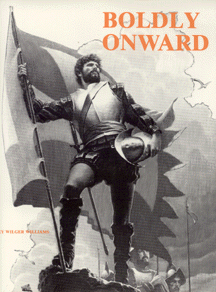| Tue, October 24, 2006 | |
|
|
Contrary to popular belief, American History began in Charlotte Harbor, Florida in 1513 with the officially sanctioned exploration of Florida's east and west coasts by Ponce de Leon. He returned to the Charlotte Harbor complex, probably at Pine Island, in 1521, to establish a colony -- a century before the Pilgrims landed at Plymouth Rock. After six weeks of labor to build a fort and church, the expedition was attacked by Calusa aborigines. Ponce was wounded in the thigh by an arrow, and gangrene set in. The entire colony returned in haste to Havana, where Ponce died of his wound. The American mainland was opened for European settlement by the Hernando DeSoto expedition of 1539-42. Chronicles of survivors and research of 16th-century ship drafts by Sun-Herald historian-columnist Lindsey Williams indicate the explorer landed at Live Oak Point on the north shore of Charlotte Harbor. The official Florida DeSoto Trail Commission has acknowledged that the Charlotte Harbor landing is as feasible as any other -- pending archaeological proof. The Spanish explorer Pedro Menedez D'Aviles, who established the first American colony at St. Augustine, Florida, in 1565, built a mission-fort named San Antonio somewhere in the Charlotte Harbor complex the following year. After two years of alternate cooperation and bloody warfare between the Spaniards and the Calusa, Menendez abandoned his efforts to pacify the fierce Indians of southern Florida. Book Gives Full History of Charlotte County 
An in-depth analysis of the Ponce, Panfilo Narvaez and DeSoto explorations of Florida, in easy-reading style, is set forth in Lindsey Williams' book, "Boldly Onward" (cover pictured at right)." It contains reproductions of 40 old maps and many illustrations. Well indexed, 192 pages. Send check or money order to Williams at: 1318 San Mateo, Punta Gorda, Florida, 33950. Of Lindsey's book, the critics have said: "Excellent command of the historical texts and maps." -- Jeffrey P. Brain, curator Peabody Museum of Archaeology, Harvard University. "Provides a framework for 16th century Florida that is unique to this work." -- Michael J. Hansinger, University of Florida field representative, Fort Myers, Florida. |
 © 2006
All rights reserved.
© 2006
All rights reserved.
Your Local Internet Service Provider
A division of Sun Coast Media Group Inc.
Publishers of the Sun newspapers.